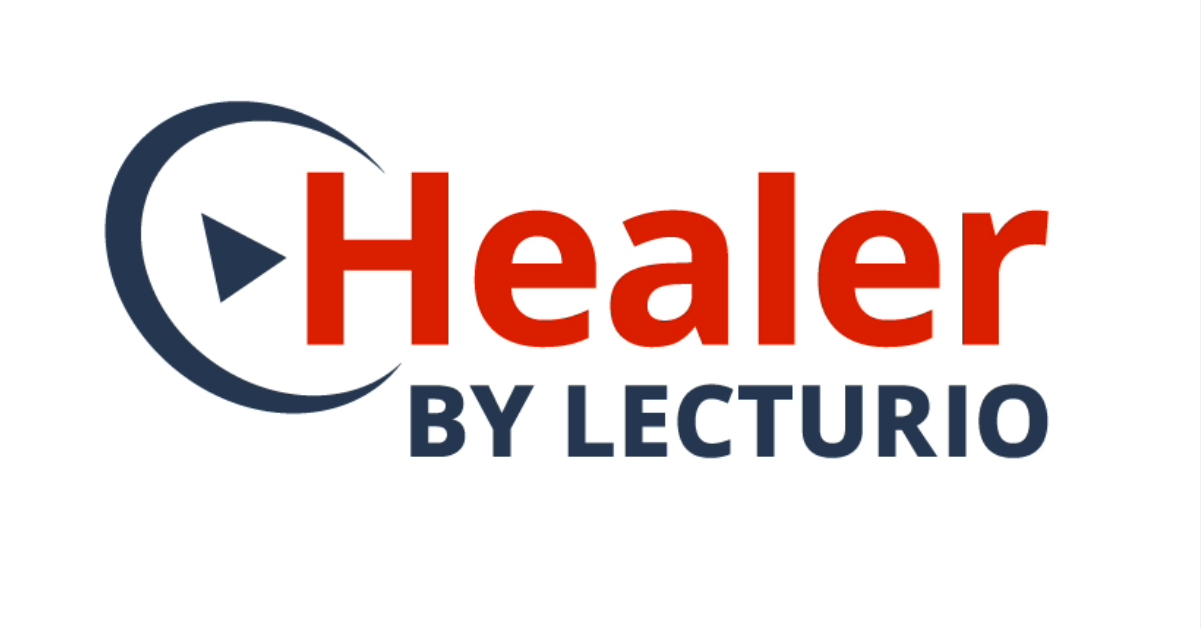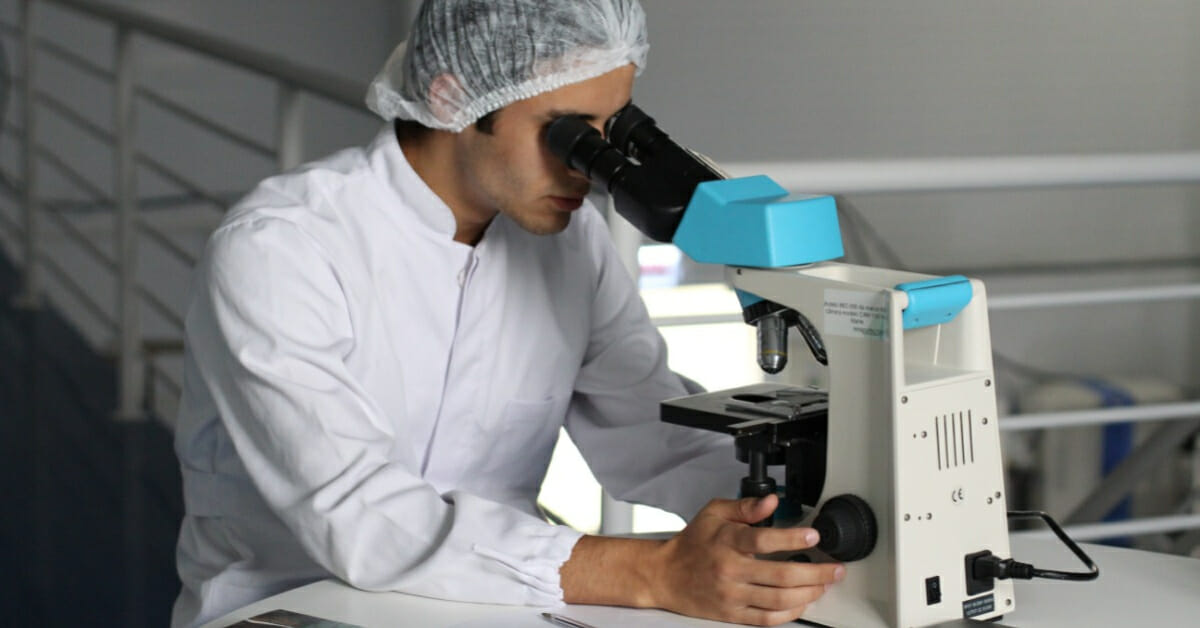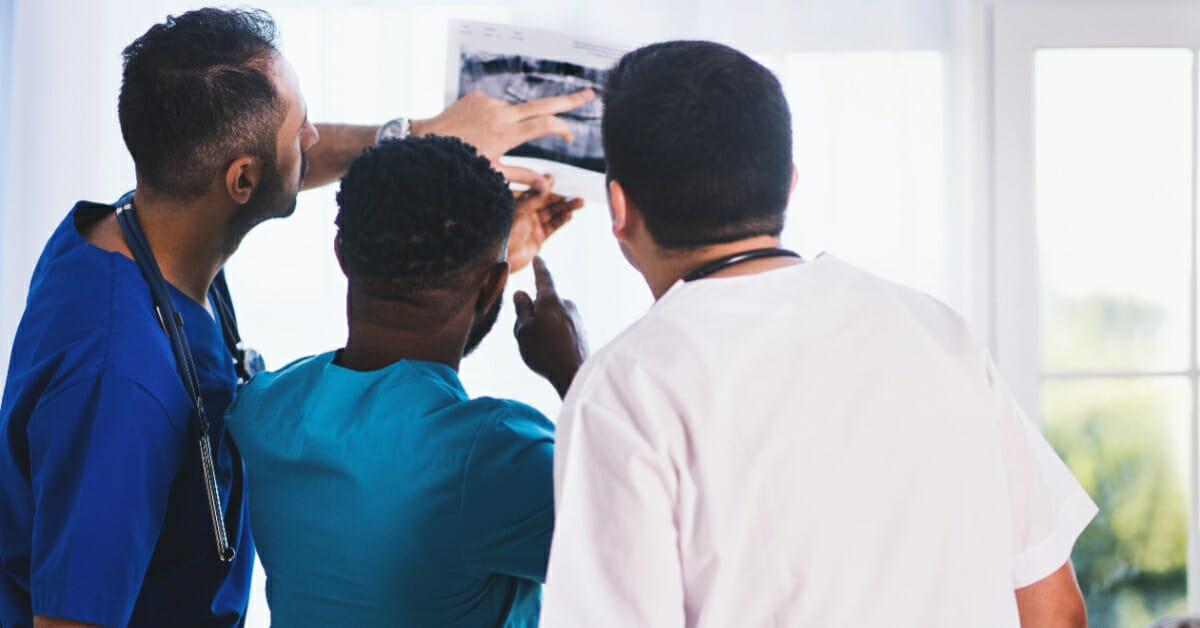Clinical reasoning is one of the most essential skills that doctors use everyday– if not the most fundamental one. By the end of medical school, students are expected to have it down pat. Yet, many medical students struggle with medical cases because bridging the gap between books and practice is easier said than done.
The ability to diagnose medical conditions and provide appropriate treatment is a core competency expected of all doctors. However, 75% of diagnostic errors associated with adverse outcomes are due to cognitive errors. Unfortunately, only a minority of medical institutions have sessions and curriculum time dedicated to clinical reasoning.
Enter Lecturio’s new feature, Healer – a clinical case simulator that guides students through various medical cases step-by-step, applying medical knowledge to simulated practice. This article will talk about the importance of clinical reasoning, the common challenges medical students often face, and how Healer can help you become a better future doctor.
Why Clinical Reasoning Is Essential for Medical Students
In the classroom, it’s one thing to memorize everything in the books. But applying your knowledge is a whole different ball game, requiring time and practice. Not every patient is going to be the perfect textbook definition of their disease. A condition can be present with other comorbid diseases or it can masquerade as other illnesses. More often than not, it’s never simply one problem affecting the patient– it’s a whole network of biopsychosocial factors that contribute to what a patient is experiencing.
Often, a misunderstanding of the patient can lead to a misdiagnosis, resulting in the wrong treatment being given. In the U.S., around 795,000 people die or become permanently disabled per year as a result of diagnostic errors and related harms. These misdiagnoses are frequently caused by cognitive biases that doctors may not even realize they have.
Another reason is that the biggest exams in medical school require you to have at least some mastery of clinical reasoning. Your OSCEs, USMLE®, and COMLEX® don’t just rely on recalling from textbooks or clinical practice guidelines. They ask multiple-step questions that students won’t be able to answer with poor reasoning skills. Without effective and structured preparation that teaches students how to approach the exams, passing becomes more difficult.
Passing your exams is only the beginning. Your hospital rotations will push you to think like a doctor. You will be dealing with real patients who need your care and you’ll have to come up with what you believe is the best management. If you can’t apply your textbook knowledge to practice, you will struggle in actual clinical rotations.
So let’s discuss what exactly students may find challenging when it comes to clinical reasoning.
The Biggest Challenges in Learning Clinical Reasoning
It’s not easy to teach clinical reasoning. It’s complex and relies on experience– something difficult to understand without real-world exposure. It’s easy to teach what’s already written in a textbook, but teaching someone how to think and shape their mindset is a whole different challenge. So it’s understandable that some institutions may fall a bit short in fully developing this skill.
Unfortunately, the opportunity for students to learn and hone their clinical reasoning skills can be limited for the following reasons:
#1: Hospital rotations don’t always provide structured learning
While clinical experience is the best teacher, it has its limits in reality. You won’t encounter every type of condition in your rotations. As a result, you may miss out on several moderately rare cases and even a few common ones. So your learnings depend mostly on what cases you encounter. Unfortunately since the time for rotations is limited, it’s hard to follow a case through its whole trajectory and reflect on their management.
On top of that, hospital rotations may be geared more toward completing tasks over clinical discussions. Busy days are filled with chart-writing, calling members of the medical team, and laboratory follow-ups. Even if you did have time after your shift to study cases, there may be some days where you’re too tired to think and want to rest before the next shift.
#2: Not all instructors give feedback towards clinical reasoning
Not every consultant or resident is trained or has the time for formal teaching. Attending physicians will often ask questions to prompt learning, but will only confirm that your answer is correct or suggest you read up more. High patient load and time pressures may leave doctors too occupied to pause and have detailed discussions on their cases. As a result, opportunities for students and trainees to develop their clinical skills are limited.
It can also become confusing because not all doctors– even those in the same specialization– have the same approach to a case. With senior doctors with varying perspectives and clinical backgrounds, students may find it difficult to extract a single ‘correct’ method for approaching cases.
#3: Cognitive biases are hard to unlearn
Cognitive biases tend to get in the way of coming to the correct diagnosis. There are multiple biases that students need to avoid or unlearn when they start their clinical stage of medical school.
- Anchoring bias – This is when you fixate on the first piece of information acquired to guide your diagnosis. For example, if you know the patient is asthmatic and has persistent cough, you may assume the cough is due to an asthma exacerbation without checking for other causes.
- Confirmation bias – Sometimes people tend to focus only on evidence that supports their initial impression while ignoring other significant findings.
- Representative bias – Occurs when a diagnosis is made based on how closely it matches the classic, textbook picture. For example, a myocardial infarction may be missed in a woman presenting with just epigastric pain instead of the classic left-sided chest pain.
- Authority bias – A common bias wherein trainees assume that the senior is always right without questioning any inconsistencies.
- Premature closure – This happens when the most likely diagnosis is made too soon, so additional diagnostics are no longer ordered. For example, a patient with abdominal pain, may be diagnosed with irritable bowel syndrome immediately without considering an ectopic pregnancy.
#4: There is no “safe space” to practice your thought process
Working in the hospital usually requires you to shadow a senior doctor. It’s easy to fall into the habit of passive learning instead of using active participation because, as a student, you can’t practice medicine independently yet. So the easiest way to learn is to take notes to study later on, which unfortunately doesn’t further your clinical reasoning skills.
Another problem is that students are (understandably) scared to be wrong. Due to the high-stakes nature of working with real patients in a hospital, being wrong can have detrimental consequences. Wrong answers, even without any real consequences for the patient, can be met with a reprimand by a senior doctor. Instead, some students choose silence. They remain too hesitant to ask questions, and are unable to vocalize their clinical reasoning process.
How Healer Helps You Master Clinical Reasoning
So some of you may be reading this article because you’ve come across the new feature on Lecturio and wondered what it is, how it works, and how it helps you be a better clinician.
What is Healer?
Healer is a virtual reasoning platform designed for medical students. It is a patient simulation tool where learners play the role of the clinician, interacting with their patient while they gather as much information about their condition as possible to lead to a proper diagnosis and appropriate treatment.
Healer was acquired by Lecturio last year with the aim of honing clinical reasoning skills for medical students and residents. Designed by the NEJM Group, it provides educators a platform where they can teach and assess the skills of students more effectively. Through Lecturio Premium, Healer provides:
- An easy-to-use and engaging interface that helps students feel well-guided and motivated
- Reduced workload for educators where they don’t have to walk patients through entire cases, freeing more time to reflect on a student’s approach personally
- Objective grading and feedback regarding a student’s information acquisition skills, diagnostic reasoning, and treatment plan based on expert opinion
- Access to Lecturio’s learning analytics to help identify areas for growth
- A risk-free environment where students can practice their reasoning skills without the fear of real-world consequences
- A clear structure where notes can be reviewed so cognitive biases and gaps in knowledge can be directly assessed and promptly addressed
How it works:
Healer uses educational models that promote clinical reasoning in a clear and systematic way. The diagnostic reasoning process can be seen in the diagram below. However, the simple interface of the program makes this easier to digest!
Key Elements of Diagnostic Reasoning (Bowen, 2006)
So how does Healer work?. Take notes while the data acquisition process is happening on your Diagnosis Pad. Check the boxes for pertinent positive and negative findings. Make sure to keep taking organized notes and listing down each differential as you go. Finally, before moving to the next tab, review your facts and rearrange your differentials from the most likely to least likely diagnosis. All this (even your notes) will be analyzed by the end of the case:
- History: The program first presents you with the identifying information of the patient. It then presents you with a case as you take up the role of the clinician, talking to the patient yourself.
- Physical Exam: The physical exam findings are divided into organ systems. Ideally, you should check each system as there may be findings that aren’t caught in the initial patient interview.
- Diagnostics: Pertinent blood chemistry, clinical microscopy, and imaging findings can be found here, helping rule in and rule out your differentials.
- DxPause: Once all the data is gathered, an illness script on the top 3 most likely diseases is made. The most pertinent information on the problem list will be sorted in Venn Diagram format to help you compare these diseases, and ultimately come to the most likely conclusion.
- Management: Finally, you’ll be asked to come up with a holistic approach to patient management. You’ll be asked what your initial plan is, what advice will you give, and what will you educate the patient about their condition?
- Feedback: After all this is done, Healer will review all your answers and compare them to that of an expert.
Don’t be intimidated if your diagnostic accuracy is low. That’s just part of the learning process. Due to time constraints, a lot of doctors do focused history and physical exams in reality, while trying to avoid ordering unnecessary laboratories. However, this program provides complete findings about the patient. This is to make sure that you have a comprehensive approach towards your patients and build a habit of being as thorough as possible when you interact with real patients
Why Healer Is Now Part of Lecturio Premium
Lecturio’s mission has always been about providing students and educators the best possible evidence-based learning tools. This includes making medical learning digestible and manageable, to help address the global shortage of healthcare professionals.
Diagnostic errors are a major challenge in medicine, often stemming from a lack of practical experience during early training. Lecturio’s Healer simulations solve this by offering a risk-free environment to master clinical reasoning. This platform allows you to benchmark your diagnostic logic against experts, ensuring you address skill gaps early. This goes beyond standard coursework; it is an essential step toward becoming a job-ready physician.
Want to bring these simulations to your medical school? Healer is an exclusive feature for our institutional partners. Reach out to your faculty today and recommend a Lecturio partnership to unlock full access for your cohort.




